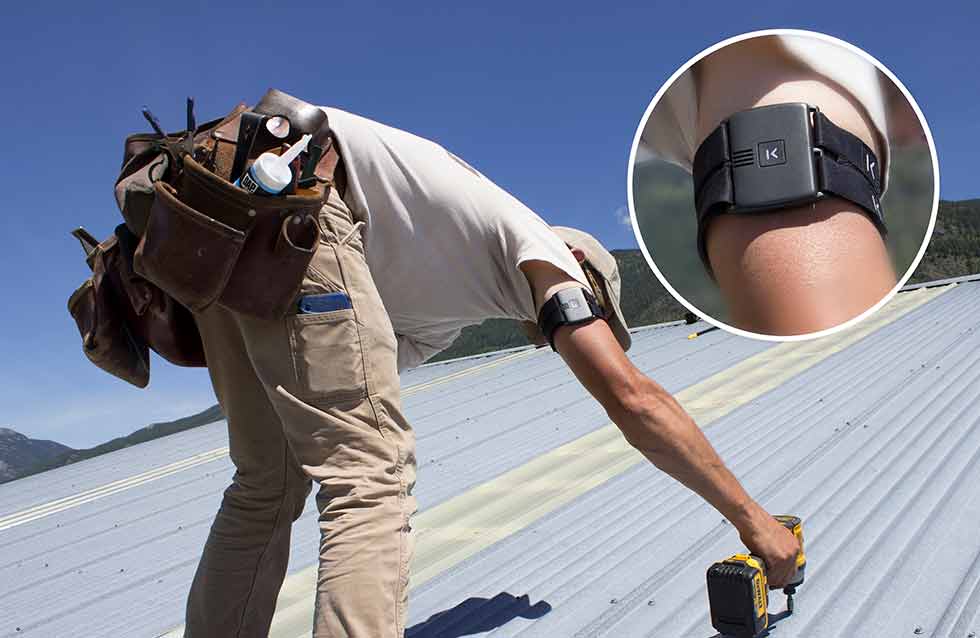
While most people are enjoying the summer and warmer weather, workers in many industries worldwide are exposed to dangerously hot working conditions. With minimal federal standards in place to protect workers from heat stress, employers need to understand the risks and take action to prevent heat stress injuries.
Employee Risk
Heat stress occurs when the body cannot get rid of excess heat—the body’s core temperature rises and heart rate increases. A rise in body temperature can affect mental functionality, including confusion, irritability, convulsions, fainting and even death. The Occupational Safety and Health Administration (OSHA) recently noted that millions of workers in the United States are exposed to heat stress in the workplace. This includes workers from various industrial jobs, including manufacturing, oil and gas, utilities and mining. As the climate changes, workers who work outside are at higher risk for heat-related injuries.
Researchers analyzing the Census of Fatal Occupational Injuries identified 285 construction worker deaths directly related to heat from 1992 to 2016. Seventy-eight percent of those deaths occurred during the summer months between June and August. As global warming leads to hotter temperatures worldwide, the risk of heat-related deaths is also increasing. For context, for each one-degree increase in summer temperatures, the likelihood of heat-related death increases up to 37%.
Factors contributing to heat stress include environmental temperatures, humidity, radiant heat sources and strenuous physical activities. While there are some guidelines related to heat stress exposure, research has shown that one size does not fit all in heat stress management. Existing guidelines do not consider individualized factors such as age, weight, sex, fitness, medications and previous medical conditions.
In addition, personal protective equipment (PPE), clothing designed to keep industrial workers safe, can increase the danger of heat-related illnesses in hot, humid and cool work environments.
The Impact
Heat stress injuries such as heat stroke, heat exhaustion, heat cramps and death impact global workforces and cost billions of dollars each year in medical care and productivity losses. For example, 30% of individuals who work in elevated temperature environments report productivity losses. Heat-related injuries occur in just about every major working group that the U.S. Bureau of Labor Statistics tracks. In 2018, 3,120 workers missed at least one day away from work due to heat. Two of the top contributors to that total were construction and transportation, with 370 and 820 workers affected, respectively. Using OSHA’s cost estimator and a 6% profit margin (close to the average for the construction industry), a single heat-related incident requires about $1.3 million in sales to cover that incident’s direct and indirect costs. One of the most critical factors about heat-related injuries is that they are almost entirely preventable.
Heat Stress Prevention
Prevention of heat stress is essential and it is the employer’s responsibility to provide training, oversight and technology so workers can identify symptoms and take action to prevent injury. The Centers for Disease Control and Prevention (CDC) and National Institute for Occupational Safety and Health (NIOSH) provide employers with workplace posters and information to help inform workers. Key methods to prevent heat stress include hydration, acclimatization, work-rest scheduling, training and supervisor monitoring.
Proper hydration and fluid intake during outdoor activities is a critical part of preventing heat stress injuries. As the core body temperature rises, the heart rate also increases to pump more blood to the skin surface to dissipate the excess body heat in the form of sweat. Individuals who lose a percentage of body mass through sweat can exhibit an increased heart rate and core body temperature and a decrease in cognitive awareness. Dehydration also makes workers more susceptible to heat-related injuries and illnesses. Blood is made up of approximately 50% water; therefore, it is essential to stay hydrated and replace water loss due to sweat.
Acclimatization is a physical change that allows workers to build up a tolerance to working in heat safely. This is achieved by slowly increasing workloads over several weeks by limiting heat exposure duration by taking breaks for water and rest. Each individual is different depending on their risk level, such as previous medical conditions or medications. Understanding the risks and carefully monitoring a worker’s physiological data can help ensure safe and complete acclimatization.
Technology that can monitor, predict and alert workers when they are at risk can save lives. Fortunately, many tech companies are leveraging technology and experience to develop solutions to help protect at-risk workers. Wearable, cloud-connected devices that are comfortable for workers can provide real-time safety alerts by monitoring each worker.
PPE manufacturers can offer wearable devices that track core body temperature, heart rate, exertion levels and hydration. This can leverage machine learning and advanced algorithms to analyze millions of physiological data points and individualized user information to provide actionable alerts to prevent heat-stress injuries and illnesses. Mobile applications can alert the individual worker to privately self-monitor their health from their phone. A web dashboard provides safety managers with a remote worksite view of their team to help monitor and improve safety while reducing risk and increasing team productivity.
Technology cannot address all workforce dangers, but it can be a powerful tool in addition to worksite training, hazard awareness and oversight. While safety regulations catch up with the constant change and risks faced by global workforces, technology will continue to improve and do its part to help protect workers.
References
- osha.gov/heat-exposure
- Dong, XS, West, GH, Holloway-Beth, A, Wang, X, Sokas, RK. Heat-related deaths among construction workers in the United States. Am J Ind Med. 2019; 62: 1047- 1057. doi.org/10.1002/ajim.23024
- Notley, SR, Flouris, AD, Kenny, GP. Occupational heat stress management: Does one size fit all? Am J Ind Med. 2019; 62: 1017– 1023. doi.org/10.1002/ajim.22961
- bls.gov/iif/oshwc/osh/case/cd_r63_2018.htm
- osha.gov/safetypays/estimator
- cdc.gov/niosh/index.htm
- tdworld.com/electric-utility-operations/article/21134223/protecting-field-workers-in-the-summertime-heat

